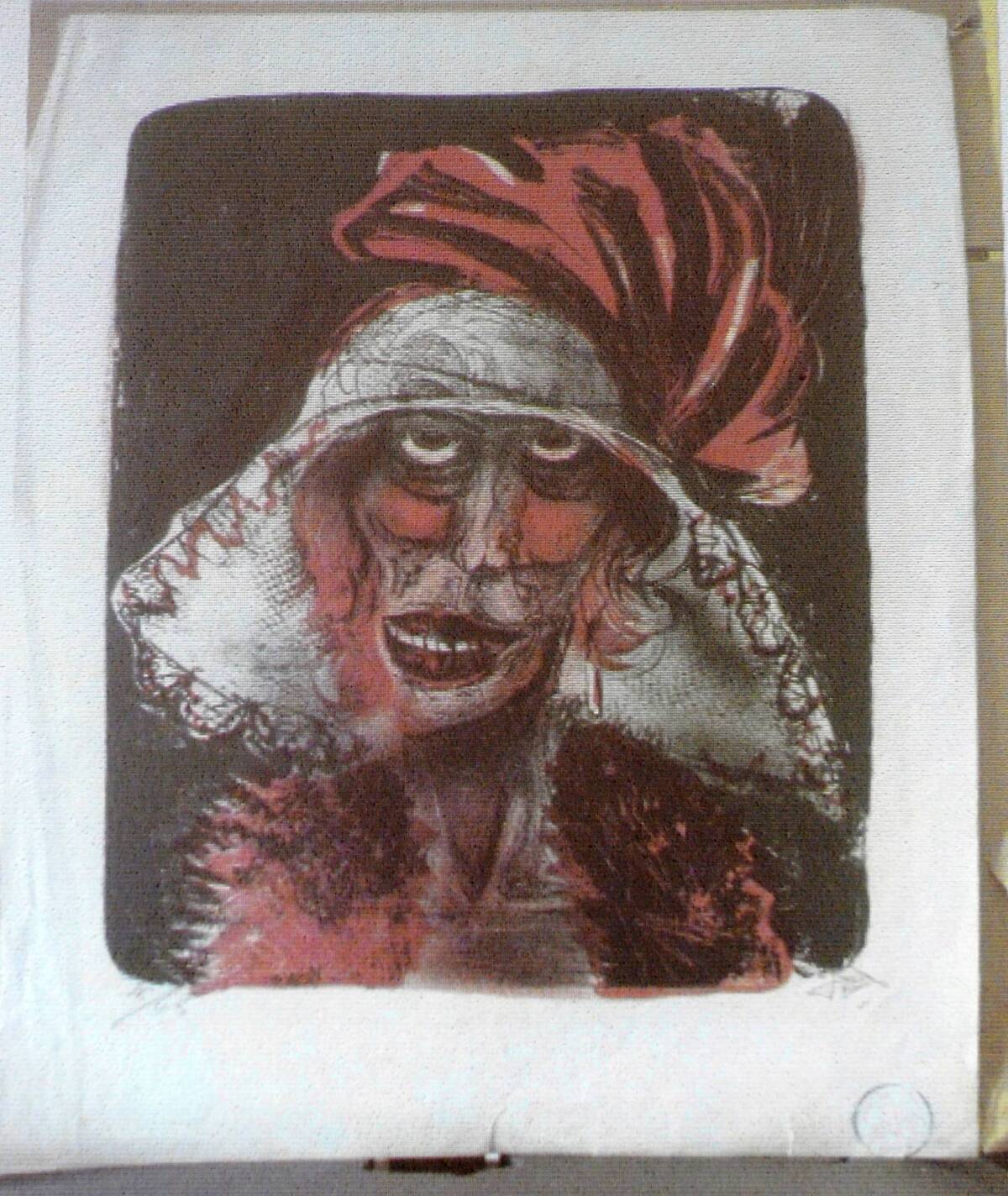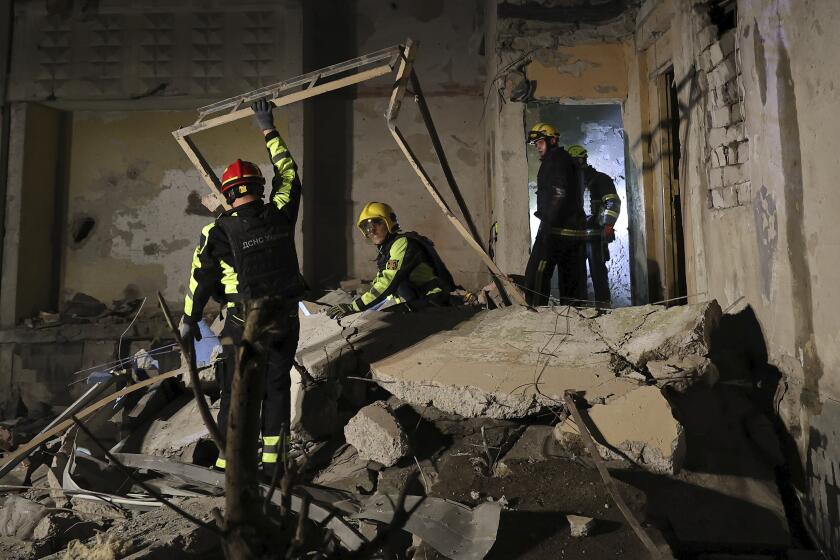Details emerge of masterpieces in Nazi art trove

LONDON — Unknown masterpieces by artists such as Marc Chagall and Henri Matisse, works thought lost to the ravages of war and others deemed “degenerate” or looted by the Nazis form part of the spectacular trove of art discovered by German authorities in the apartment of an elderly recluse in Munich.
Two days after news of the find broke, officials in southern Germany revealed Tuesday that the hoard contains 1,406 pieces by masters whose names read like a who’s who of Western art of the last 150 years: Pablo Picasso, Pierre-Auguste Renoir, Henri Toulouse-Lautrec, Gustave Courbet, Oskar Kokoschka, Emil Nolde.
But the collection goes back even further, with items by 16th century artist Albrecht Durer and 18th century painter Canaletto — works that have not been publicly seen for decades, if not longer.
“When you stand in front of works and see these long-lost works in good condition that were thought to have been destroyed, that is such a happy feeling,” said Meike Hoffmann, an art expert at the Free University of Berlin who has been examining the haul. “The pictures are of extraordinary quality and are of huge scientific value. Many works were not known before.”
Among the new discoveries are an allegorical scene by Chagall, a rare self-portrait by Otto Dix and an untitled painting of a woman attributed to Matisse that probably dates to the 1920s.
In all, authorities seized 121 framed and 1,285 unframed works from the crowded apartment of Cornelius Gurlitt, the son of a well-known Nazi-era art dealer, in a raid on his Munich flat in early 2012. The haul includes oil paintings, watercolors, etchings and drawings.
Reinhard Nemetz, a state prosecutor in the city of Augsburg, near Munich, said there was “concrete evidence” that some of the works had been plundered or confiscated by the Nazis during their persecution of Jews or their campaign against what leader Adolf Hitler denounced as “degenerate art.”
Yet determining whether Gurlitt is guilty of a crime is a complex matter. The 80-year-old is under investigation for possible tax evasion and embezzlement, but Nemetz acknowledged that police are not in touch with him and have not arrested him, despite having impounded the astonishing contents of his flat.
“We currently have no contact with the suspect,” Nemetz told reporters. “But there is no urgent suspicion that would justify a warrant.”
The raid on Gurlitt’s home, the culmination of a long investigation, occurred over a three-day period, from Feb. 28 to March 2, 2012. That is a year later than was originally reported by the German magazine Focus, which broke the story of the remarkable discovery over the weekend.
Since word of the cache emerged, advocates of returning art looted during the war have criticized German officials for keeping quiet so long and for failing to issue an inventory as quickly as possible to allow heirs of the original owners to reclaim what was stolen.
Nemetz said that keeping the works safe was crucial and that their security could have been compromised by a media frenzy surrounding news of their discovery. He does not intend to exhibit or publish images of the entire stash, and it will be up to people who believe that a former family possession might be included to contact his office.
“Our primary goal is to investigate whether there has been a crime,” Nemetz said. “It is by no means easy to find the rightful owners, particularly when we are talking about more than 1,400 paintings.”
He added: “It is totally counterproductive for us to go public with this case. We don’t want to keep the pictures. The pictures are not going to be put up in my office.”
The report in Focus magazine estimated that the works could be worth more than $1.3 billion, but Nemetz said his office had not made any determination of the cache’s monetary value.
Preliminary research is underway on 500 of the 1,400 items so far, Hoffmann said. Documenting and authenticating the pieces could take years, especially those not found in catalogs or on lists of the artist’s known oeuvre.
“We have a wonderful gouache by Marc Chagall, an allegorical scene that is not included in [Chagall expert] Franz Meyer’s catalog,” said Hoffmann. “No photos exist.... The origin is still not completely clarified.”
The untitled Matisse portrait is of a woman he featured in other paintings, and the room in which she’s sitting is also familiar, Hoffmann said. Research indicates that the work was seized by the Nazis from a bank vault in France in 1942, but it has not shown up on art registers.
And the depiction of a village girl with a goat by Courbet, which was known to exist but was believed lost after it was auctioned in 1949, resurfaced in the Munich cache, though it is not clear how the painting wound up in Gurlitt’s hands.
Tracing transfers of ownership, through both private and public transactions (such as at auctions and through museums), can be difficult because many records from the wartime era have not survived, including those kept by the Nazis.
“They were often very meticulous,” said Christian Huemer, who specializes in provenance issues at the Getty Research Institute in Los Angeles. “If you did an auction in Germany during the Nazi era, you had to report to the authorities what you put on auction and what the price was.... [But] some crucial material has been lost.”
Huemer has helped put together a digitized index of 2,000 auction books and sales catalogs from German-speaking countries and German-occupied territories between 1930 and 1945.
He said that in recent years researchers have begun shifting from investigating the origin of specific pieces to studying how the art market worked, including the operations of dealers in Germany now known to have continued trading in stolen art after the war.
“There’s a lot of material sometimes out there, but it’s in many different countries, in many different archives, sometimes in private hands,” Huemer said. “Things are surfacing step by step. But of course we don’t have records for everything.”
Gurlitt first came to the notice of German authorities during a customs inspection of passengers aboard a train from Zurich, Switzerland, to Munich in September 2010. Focus reported that he had more than $12,000 in cash on him, which was within the legal limit but which aroused suspicion.
His father, Hildebrand Gurlitt, was a noted art dealer appointed by the Nazis to help them acquire and dispose of artworks. The elder Gurlitt died in 1956, having told Allied investigators after the war that rumors of his owning a trove of art were false and that whatever holdings he had were destroyed in the bombing of Dresden.
Siegfried Kloeble, head of the Munich customs department, said the hoard in Cornelius Gurlitt’s apartment was stored in a single room, in a way that allowed the works to remain in good shape, their colors preserved.
He said it was unlikely that Gurlitt had other works stashed away anywhere else.
More to Read
Sign up for Essential California
The most important California stories and recommendations in your inbox every morning.
You may occasionally receive promotional content from the Los Angeles Times.









